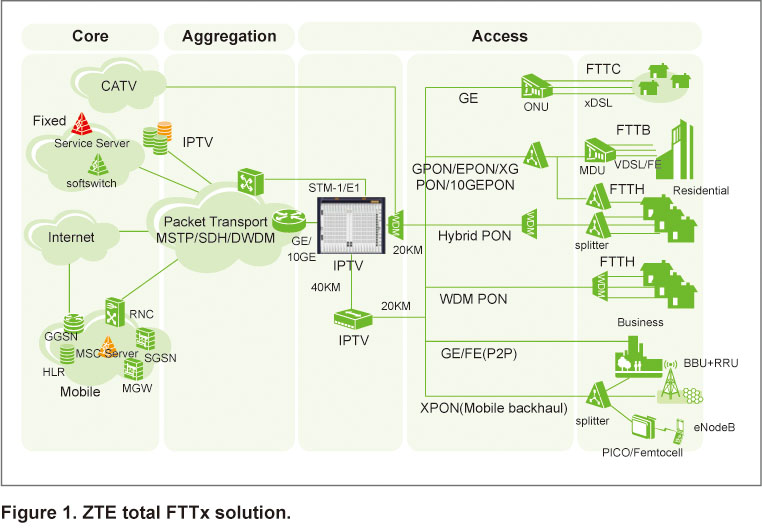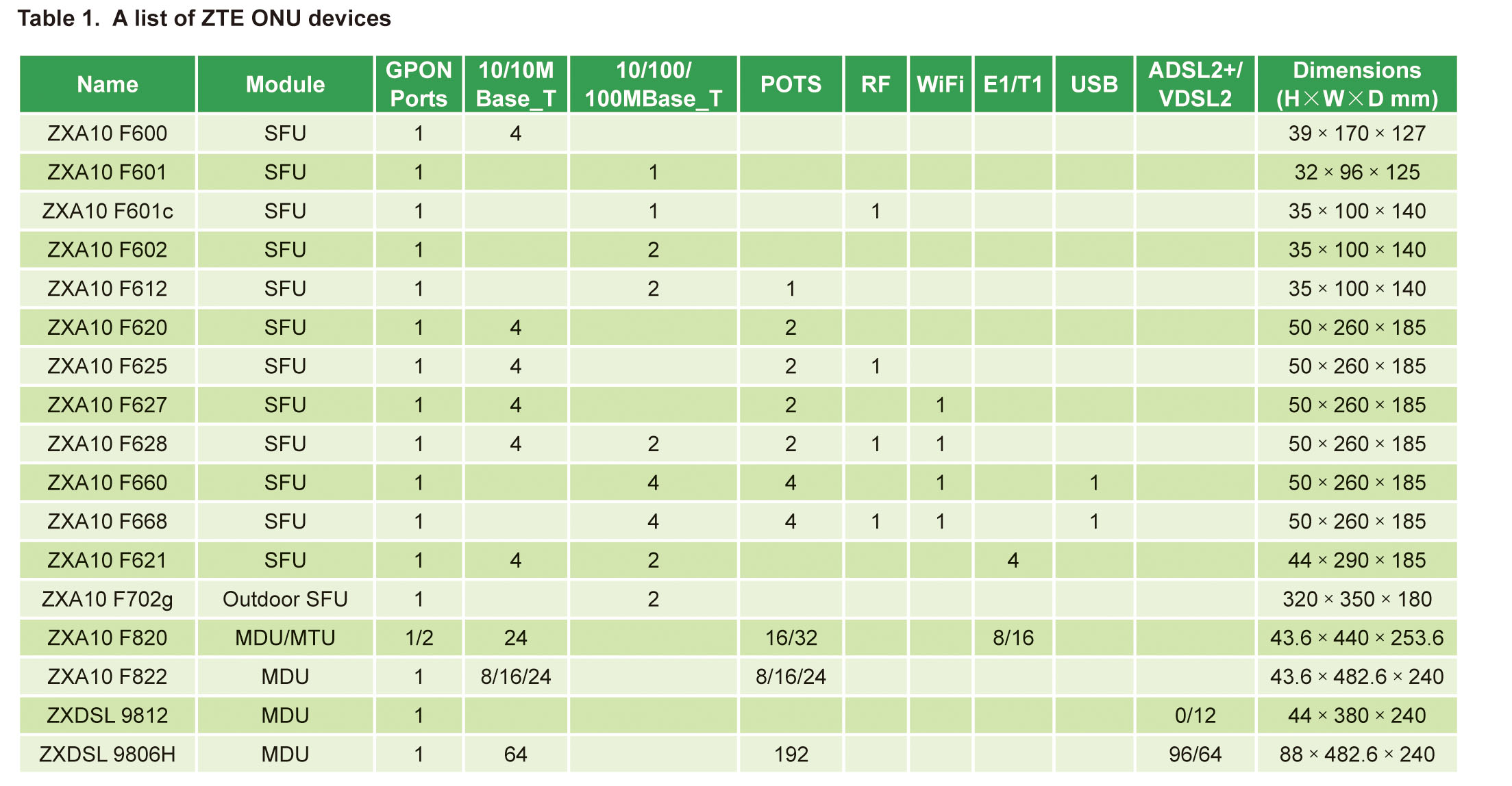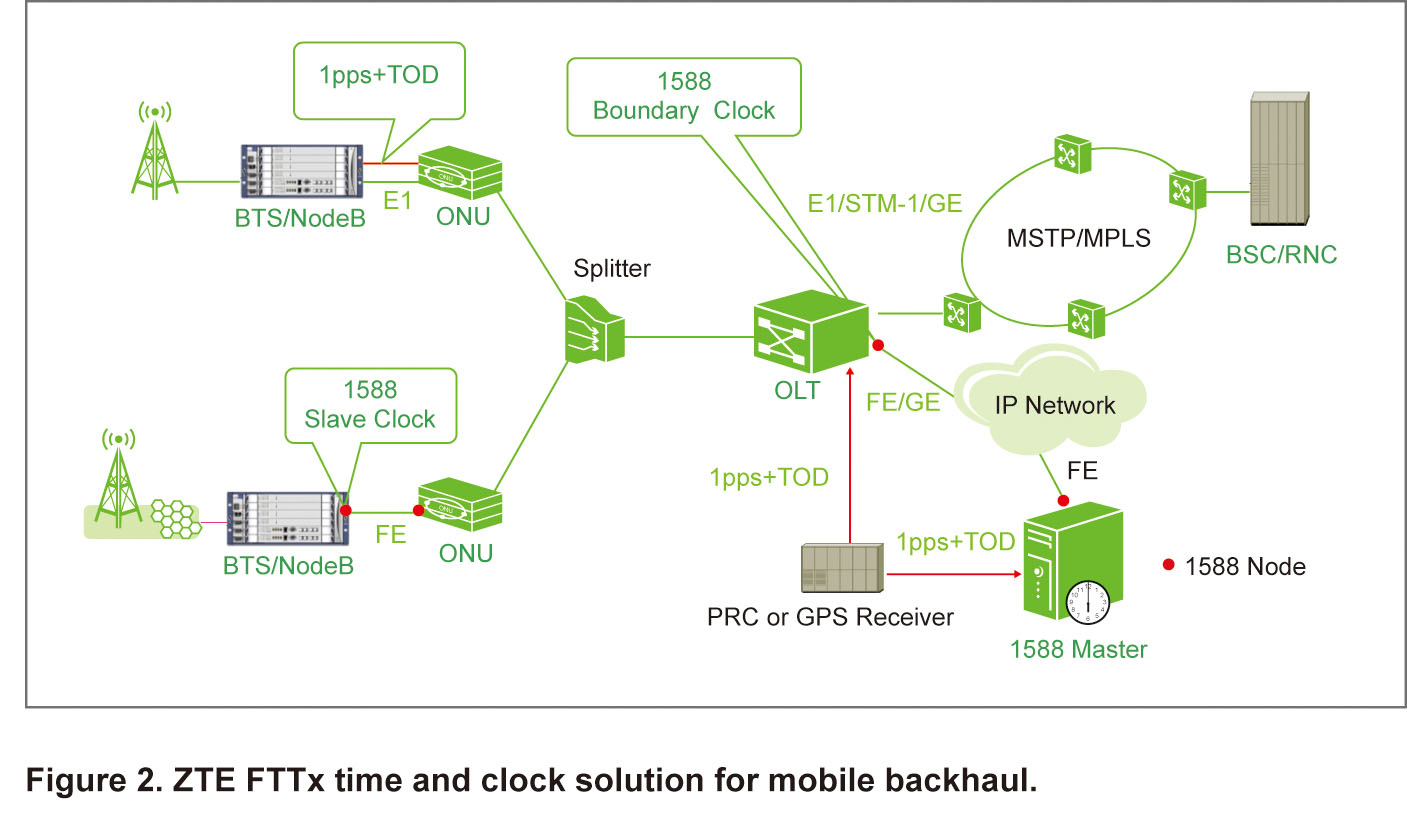Future-Oriented Green FTTx Solution
With the development of information technologies in recent years, user needs have expanded from simple voice to a multiplay of voice, video, data and images. An increasing number of users are paying attention to new broadband services, such as IPTV, VOD, online games, e-learning, video conferencing and video phone, and these place greater demands on network bandwidth, QoS and security. Value-added services have also become an important means for operators to attract users and increase their income.
The growth of these new services has led to increasing bandwidth demands at the access layer. With the development and convergence of core networks, broadband access and sustainable evolution have become crucial in network construction. Also, with technological advancement, improvement of manufacturing processes, and rapid reduction in fiber cost, extending optical fiber to the user has become the development trend of access layer.
Recent years have seen explosive growth of fiber-based Passive Optical Networks (PON). With features like fiber saving, passive devices, easy maintenance and transparent network protocols, PON systems have aroused widespread interest from industry and are playing an increasingly important role in building FTTx networks at the access layer. ZTE has developed a series of PON and ODN products capable of delivering diversified FTTx solutions that can be applied to various scenarios like fiber to the home (FTTH), fiber to the building (FTTB), fiber to the curb (FTTC), fiber to the office (FTTO) and fiber to the village (FTTV). Its total FTTx solution is illustrated in Figure 1.

ZTE total FTTx solution has the following attractions:
■ A vast array of product series applicable to various scenarios
For residential districts and buildings where copper cables are installed, and rural areas with low user density, ZTE provides a MDU/MTU product series of different capacities and different ports (such as Ethernet, E1, DSL and POTS) which allows users to access broadband Internet, VoIP, IPTV, traditional PBX, and mobile backhaul services. For newly-built residential districts and high-end users, ZTE provides the most complete range of ONU devices (see Table 1) to meet their diverse needs.

■ Large-capacity OLT adaptive to the trend of flat network architecture
ZXA10 C300 is a large-capacity OLT device developed by ZTE. It supports 128 EPON/GPON ports, 16,384 FTTH users and more FTTB/FTTC users in a single rack. It also provides a maximum uplink capacity of 80Gbps and a backplane capacity of 3.2Tbps. It is an OLT device with the largest capacity and highest-density cards in the industry.
■ Energy saving and environmental friendliness
Nowadays, people have a heightened awareness of energy conservation and environmental issues more generally. Leading global operators are likewise demonstrating increasing concern about environmental protection and energy saving in the application of their equipment. ZTE, the first vendor to put forward a “green broadband” solution in the industry, has incorporated the green concept into its FTTx solutions. Its OLT and ONU devices including every PCB board and ASCI chip have passed strict power consumption tests, and consume 40% less power than comparable industry products. Moreover, their power consumption has been further reduced by 20% using the innovative power control technique. Due to its excellent performance in controlling power consumption, ZTE has won prestigious international awards, such as the InfoVision Award at BBWF Europe 2007 (for its GPON + VDSL2 solution), the Best Green Innovation Award at Convergence World 2008 (for its ZXDSL 9806H (ONU), and the Top Ranking in 2009 Current Analysis Global DSLAM Equipment Selection.
■ Rich experience in ODN design
ODN construction has become a major concern for operators because it accounts for over 60% of the total cost in an FTTx project. ZTE has launched a full range of ODN products, offering operators a total PON solution that covers system design and service delivery.
■ Powerful support platform for smooth evolution
ZTE FTTx solution supports not only EPON and GPON but also the smooth evolution to NG PON without any alteration to the main boards, power boards, or uplink boards. In order to support NG PON technology while allowing coexistence with existing GPON/EPON users in the same ODN network, it only requires the insertion of XG PON, 10GEPON, or WDM PON line cards into the GPON or EPON rack without changing the original GPON/EPON ONT. This can protect operators’ initial investment.
■ Rich TDM uplink ports supporting time and clock synchronization
ZTE FTTx solution offers a variety of high density TDM uplink ports such as E1/T1/STM-1/STM-4 to meet the access demand of all TDM services—including PBX and DDN private lines. It also supports the IEEE 1588v2 Precision Time Protocol (PTP) and provides FE/GE and 1PPS+TOD ports, which can implement time and clock synchronization for 2G/3G mobile backhaul.
As illustrated in Figure 2, the OLT connects to MSTP/MPLS transport network and BSC/RNC through the E1/STM-1/GE port. It obtains 1588v2 time synchronization data from the IP network through the FE/GE port, or clock synchronization data from the GPS receiver or the 1588 master through the 1PPS+TOD port. All time and clock data are transmitted to the ONU through the PON system. Then the ONU transmits time and clock synchronization data to the BTS/NodeB through the 1PPS+TOD port or the FE port. In this way, the clock and time synchronization of the whole network can be achieved.

With the widespread application of IP-based base stations and the rapid growth of IP-based 3G and even 4G mobile networks, the key problem for operators is the transfer of time and clock synchronization data between IP-based base stations and IP-based networks. ZTE FTTx time and clock solution is an ideal solution to the problem.
In addition, ZTE FTTx provides DiffServ QoS guarantee through security controls like flexible VLAN QinQ support, perfect QoS solution, and port location information.
ZTE’s FTTx solution has been commercially deployed around the world. By June 2009, ZTE had snatched a 19% market share in the FTTx application segment, ranking first place in the world according to a report by consulting firm iDATA. Drawing on its rich experience in broadband access, ZTE is capable of delivering customized FTTx solution, helping operators build future-oriented green broadband networks with the lowest TCO.